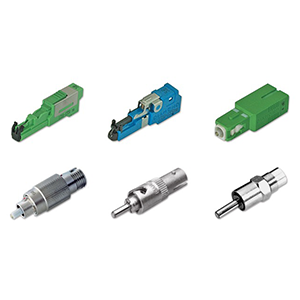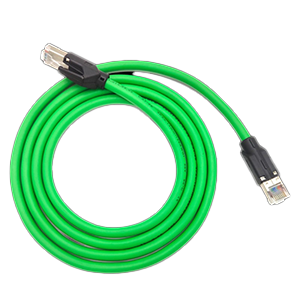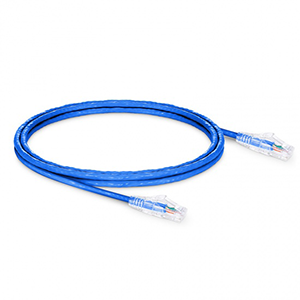As a network technology enthusiast, I am very interested in the functions and application fields of SFP-10G-SR optical modules. In this article, I will introduce you to the basic principles, features and advantages of the SFP-10G-SR optical module, as well as its application in data center networks and enterprise networks. We also discuss compatibility, interface types, and important information on deployment and configuration. I hope this article can help you better understand and utilize the SFP-10G-SR optical module to meet your high-speed data transmission needs.
Introduction to SFP-10G-SR optical module
Definition and rationale:
SFP-10G-SR is a small packaged 10 Gigabit short-distance optical module used for high-speed data transmission in fiber optic communication systems. It adopts the SFP (Small Form-factor Pluggable) packaging standard and is a hot-swappable module that can be directly inserted into the optical module slot for connection.
The working principle of the SFP-10G-SR optical module is based on photoelectric conversion technology. It contains a transmitter and a receiver for converting electrical signals into optical signals for sending and receiving. The transmitter converts the electrical signal into an optical signal and transmits it to the receiving end through optical fiber. The receiver converts the optical signal into an electrical signal for decoding and processing.
The SFP-10G-SR optical module uses multi-mode optical fiber transmission to support short-distance data transmission, usually within a range of several hundred meters. It uses a wavelength of 850 nanometers to achieve high-speed data transmission through multi-mode optical fiber.
In general, the SFP-10G-SR optical module is a solution that meets the needs of high-speed data transmission. It has the characteristics of high bandwidth, short-distance transmission, compatibility and flexibility, and is suitable for various application scenarios, including data centers, enterprise networks and campus networks.
Application fields of SFP-10G-SR optical modules
Definition and rationale:
The SFP-10G-SR (Small Form-factor Pluggable 10 Gigabit Short Range) optical module is a small packaged optical fiber transmission device used to achieve high-speed data transmission. It adopts the SFP (Small Form-factor Pluggable) packaging standard and is a hot-swappable module that can be directly inserted into the optical module slot for connection.
The working principle of the SFP-10G-SR optical module is based on photoelectric conversion technology. It contains a transmitter and a receiver that convert electrical signals into optical signals for sending and receiving. The transmitter converts the electrical signal into an optical signal and transmits it to the receiving end through optical fiber. The receiver converts the optical signal into an electrical signal for decoding and processing.
The SFP-10G-SR optical module supports short-distance data transmission, usually within a range of several hundred meters. It uses multimode fiber for transmission and operates at a wavelength of 850 nanometers. Due to its small package and flexibility, it is widely used in high-speed network environments such as data centers, enterprise networks, and campus networks.
High-speed data transmission requirements:
As a solution, the SFP-10G-SR optical module meets the needs of high-speed data transmission. Here are some relevant explanations:
-
High bandwidth requirements: As the amount of data continues to grow, modern networks have increasing demands for high bandwidth. The SFP-10G-SR optical module supports a data transmission rate of 10 gigabits per second (10Gbps), providing fast and reliable data transmission capabilities.
-
Short-distance transmission: SFP-10G-SR optical module is suitable for short-distance data transmission, usually within a range of several hundred meters. This makes it an ideal choice in scenarios such as data centers, enterprise networks, and campus networks to meet the needs of high-speed data transmission.
-
Flexibility and scalability: The SFP-10G-SR optical module adopts standard SFP packaging and has wide compatibility. It can be used with a variety of network equipment and fiber optic infrastructure to provide flexible connectivity solutions. In addition, it can also be used in combination with other types of SFP modules (such as SFP-10G-LR) to meet different transmission distance requirements.
-
Hot-swappable capability: The SFP-10G-SR optical module adopts a hot-swappable design and can be plugged and replaced during operation without shutting down the entire system. This provides convenient maintenance and upgrade options, making network operations more flexible and efficient.
Features and advantages of SFP-10G-SR optical module
-
Transmission distance and rate: SFP-10G-SR optical module is suitable for short-distance data transmission, usually within a range of several hundred meters. It supports a transmission rate of 10 Gbps and can meet the needs of high-speed data transmission. This makes it useful in environments such as data centers, enterprise networks, and campus networks.
-
Fiber type: SFP-10G-SR optical module uses multi-mode optical fiber for transmission. Multimode fiber is a fiber with a larger core diameter that can accommodate multiple beams. This makes it excellent at short-distance transmission, suitable for connecting different devices where the distance between them is short.
-
Connection method: SFP-10G-SR optical module usually uses LC (Lucent Connector) interface. The LC interface is a miniaturized optical fiber connection method with low insertion loss and high reliability. It uses a pair of ceramic or metal ferrules for connection, providing a stable fiber optic connection suitable for high-speed data transmission.
-
Flexibility and scalability: The SFP-10G-SR optical module adopts the SFP packaging standard and is flexible and scalable. It can be used in combination with other types of SFP modules (such as SFP-10G-LR) to meet different transmission distance requirements. This makes it ideal for adapting to different network environments and needs.
-
Hot-swappable capability: The SFP-10G-SR optical module has hot-swappable capabilities and can be plugged, unplugged and replaced during operation. This makes network maintenance and upgrades more convenient and flexible without shutting down the entire system.
Technical standards and specifications for SFP-10G-SR optical modules
Optical module structure:
The structural features of the SFP-10G-SR optical module are as follows:
-
Number of ports: SFP-10G-SR optical module usually has one fiber transmission port and one receiving port. The optical fiber transmission port is used to send optical signals, and the receiving port is used to receive optical signals.
-
Fiber type: SFP-10G-SR optical module uses multi-mode optical fiber for transmission. Multimode fiber has a larger core diameter and is suitable for short-distance transmission.
-
Power supply: The power supply of the SFP-10G-SR optical module is usually provided by the device in the slot. It adopts low power consumption design and usually works under 3.3V power supply.
letter of agreement:
The SFP-10G-SR optical module supports a variety of communication protocols, including but not limited to the following protocols:
-
Ethernet: SFP-10G-SR optical module is widely used in Ethernet networks and supports 10 Gigabit Ethernet (10GbE) protocol. It can be used in scenarios such as high-speed data centers, enterprise networks, and campus networks to provide fast and reliable data transmission.
-
Fiber Channel: The SFP-10G-SR optical module also supports the Fiber Channel protocol for data transmission in a storage area network (SAN) environment. Fiber Channel is a high-speed serial communication protocol used to connect storage devices and servers. The SFP-10G-SR optical module can provide reliable Fiber Channel connections.
In addition to Ethernet and Fiber Channel, the SFP-10G-SR optical module can also support other communication protocols, such as SONET/SDH (Synchronous Optical Networking/Synchronous Digital Hierarchy) and InfiniBand. These protocols are selected and configured based on specific application needs and network environment.
Compatibility and interface types of SFP-10G-SR optical modules
The SFP-10G-SR optical module has good compatibility and can be matched with multiple devices and network interfaces. Here are the key points about compatibility:
-
Equipment compatibility: SFP-10G-SR optical modules are usually used with SFP+ (Small Form-factor Pluggable Plus) slot-compatible equipment. These devices include network switches, routers, servers, storage devices, etc. They must have SFP+ slots to support the insertion and use of SFP-10G-SR optical modules.
-
Brand compatibility: SFP-10G-SR optical module has universal compatibility on equipment that meets the SFP+ standard. This means that it can be used with different brands of equipment, such as Cisco, Huawei, HP, Juniper, etc. This broad compatibility makes the SFP-10G-SR optical module one of the common optical modules on the market.
-
Protocol compatibility: SFP-10G-SR optical module supports multiple communication protocols, such as Ethernet, Fiber Channel, etc. Therefore, it can adapt to network environments with different protocol requirements and be compatible with corresponding devices and systems.
Interface Type:
SFP-10G-SR optical modules usually use LC (Lucent Connector) interface type. The LC interface is a miniaturized optical fiber connection interface with low insertion loss and high reliability. It uses a pair of ceramic or metal ferrules for connection, providing a stable fiber optic connection. The LC interface is widely used in optical fiber networks, allowing the SFP-10G-SR optical module to connect with other optical fiber equipment and modules.
In addition, the SFP-10G-SR optical module itself is also an SFP+ packaged optical module. SFP+ is a miniaturized slot-type optical module package used to support high-speed data transmission. Therefore, the interface type of the SFP-10G-SR optical module can also be regarded as the SFP+ interface type.
In general, the SFP-10G-SR optical module has good compatibility and can be used with equipment that meets the SFP+ standard. Its common interface type is LC interface, which can also be regarded as SFP+ interface type.
Deployment and configuration of SFP-10G-SR optical module
Installing the SFP-10G-SR optical module requires the following steps:
-
Turn off the equipment: Before installing the optical module, make sure that the relevant equipment has been turned off or is powered off.
-
Confirm the slot type: Check the slot type of the device and ensure that the slot is an SFP+ slot to support the insertion of SFP-10G-SR optical modules.
-
Insert the optical module: Carefully insert the SFP-10G-SR optical module into the SFP+ slot of the device. Make sure the optical module’s connection port is aligned with the slot, and push it in gently until the slot is secure.
-
Connect the optical fiber: Use appropriate multi-mode optical fiber to connect the optical fiber to the optical fiber transmission port of the SFP-10G-SR optical module. Make sure the fiber connections are secure and avoid bending or excessive strain.
-
Fix the optical module: According to the requirements of the equipment, use corresponding fixing methods (such as screws or buckles) to fix the optical module in the slot to ensure a stable connection.
-
Start the device: After completing the installation of the optical module, start the device and perform necessary configurations.
Network configuration of SFP-10G-SR optical module usually requires the following steps:
-
Port configuration: Enter the management interface or command line interface of the device and find the port configuration corresponding to the SFP-10G-SR optical module. Configure the port’s speed, duplex mode, and other parameters as needed.
-
Transmission parameter adjustment: Depending on the actual situation, the transmission parameters of the SFP-10G-SR optical module may need to be adjusted. These parameters may include transmit power and receive sensitivity, etc. Make sure these parameters are configured appropriately to ensure performance and reliability of fiber optic transmission.
-
Network testing and verification: After completing the configuration, perform network testing and verification to ensure that the SFP-10G-SR optical module works properly and communicates with other devices. Network testing tools and commands can be used to verify optical module connectivity and performance.
It should be noted that specific deployment and configuration steps may vary depending on device manufacturers and operating systems. Before proceeding with deployment and configuration, it is recommended to refer to the documentation for the device and operating system for accurate installation and configuration guidelines.
Summarize:
The SFP-10G-SR optical module is an impressive technological innovation that provides a reliable and efficient solution for high-speed data transmission. By learning its basic principles, application areas and configuration methods, we can better utilize this advanced technology to meet the needs of data centers and enterprise networks. Whether in terms of data transmission rate, fiber type or interface compatibility, the SFP-10G-SR optical module demonstrates excellent performance and flexibility. Hopefully this article has provided you with valuable information that will make you more confident and successful in the world of networking technology.
- What is SFP-10G-SR for?
- What is the difference between SFP-10G-SR and SFP-10G-SR S?
- Is SFP-10G-SR single mode or multimode?
- What is the difference between SFP 10G LR and SFP-10G-SR?
- Is SFP only for fiber?
- Does SFP 10G SR support 1G?
- What is the minimum distance for SFP-10G-SR?
- Is multimode optical fiber better than single-mode?
- Can I use multimode fiber with single-mode SFP?




